If you click on a link and make a purchase we may receive a small commission. Read our editorial policy.
The Queer history of Star Wars: A comprehensive timeline
The future of Star Wars is looking queerer than ever.
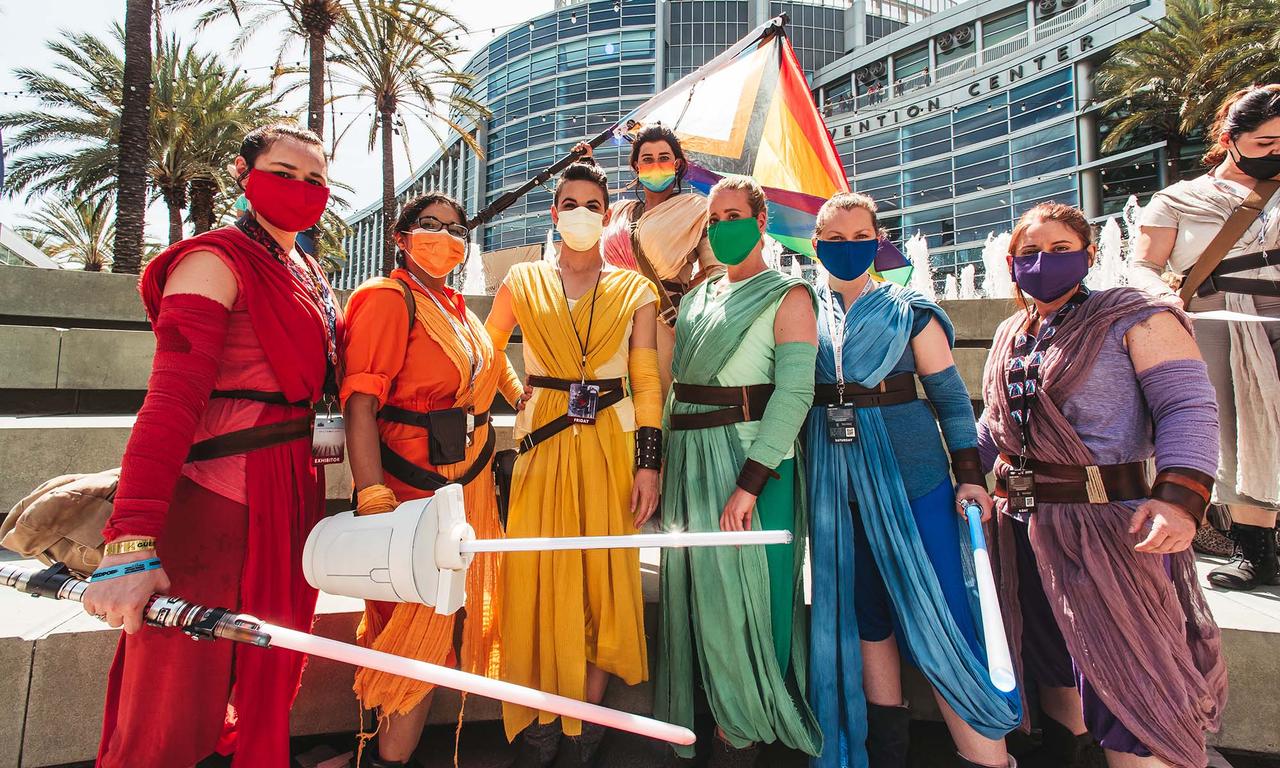
From the moment Luke Skywalker and Obi-Wan Kenobi entered that bustling cantina on Mos Eisley, Star Wars has presented us with limitless possibilities on the types of people and characters which can inhabit its galaxy. That's much of the appeal, after all, of the deep-bench toy lines and spin-off media for every imaginable character. Since the franchise's birth, characters like Princess Leia and Lando Calrissian have been expanding what an adventure hero can look like. No matter who you’re curious about or who you identify with, there’s something in Star Wars for you.
And yet, despite its presentation of thousands of imagined cultures, the Star Wars franchise has earned a reputation within queer communities for its staggering heteronormativity. For a series predicated on themes of love, the definition of love as depicted in the Star Wars films has remained shockingly narrow. But the universal identifiability of the Star Wars narrative cannot be denied.
Throughout the years, fans have found their own queer narratives buried in the story’s subtext and have formed communities to share those themes with each other. Those fans have grown up to become creators in the Star Wars universe in their own right and populate the galaxy with characters and romances which better reflect those of an underserved group of Star Wars fans. And while they’ve yet to take the center stage, the galaxy of 'Han Solo and the Princess' is steadily becoming a queerer place. Allow us to demonstrate: this is the history of queer representation in Star Wars.
1977: A Queer Code
If we’re really going to start at the beginning of queerness in Star Wars, then we have to begin with a discussion of queer coding. Queer coding is a long-established practice in media of depicting a queer person by giving that character secondary traits, such as a style of dress or manner of speaking associated with the community, without ever explicitly stating a queer identity for that character. Historically, queer coding could be positive, as a way of representatively sharing queer characters on screen in an oppressive media market which would not otherwise allow them at all – or, it could be negative, used as a tool of queerphobia to associate these queer characteristics with foolish or even evil characters. In this way, queer coding was a double-edged sword deployed by queer-identifying and queerphobic creatives in media alike.
Queer coding is all over the original Star Wars movie – particularly in the character of C-3PO, who, as played by Anthony Daniels, snipes and bickers incessantly with his “counterpart” R2-D2, and yet will lovingly undergo any sacrifice to protect him when he’s in danger. Luke Skywalker himself is another example, whose wistful longing for a more exciting life as he looks over the setting twin suns of Tatooine recalls the most famous queer icon of all: Dorothy Gale of The Wizard of Oz, whose desire for understanding and acceptance in a more colorful world so closely mirrors the experience of any young queer person who grew up without a supportive community. From the very beginning, queer fans were seeing themselves in Star Wars, but it would be quite some time before Star Wars would see them in turn.

1996: Rise of the Star Wars Zinesters
Records of Star Wars fandom, or any fandom, before the widespread acceptance of the Internet are incomplete at best. When you’re talking about queer fan spaces which often had to hide themselves away from the wider fan community at the time just to protect themselves, that goes triple. Queer Star Wars fans have probably been finding each other at conventions and in hobby stores since the series took off in the summer of 1977. But the first queer Star Wars fan community on record can be identified the distribution of the Elusive Lover fanzine edited by Cara J. Loup from 1996 through 2001, which shared unofficial stories of queer romance against a Star Wars backdrop – typically featuring pairings of either Han Solo and Luke Skywalker, or Han Solo and Empire Strikes Back scene-stealer Lando Calrissian. With an unforgettable performance by Billy Dee Williams, Lando’s disarming charisma came through with a power as effective on dashing smugglers as it was on space princesses. In the decades to come, that interpretation would even find widespread acceptance.
As the Internet became a meeting place for fanfiction writers of all kinds, zines like Elusive Lover gave way to more robust communities such as Fanfiction.net, LiveJournal, Tumblr, and Archive of Our Own (or AO3), where queer Star Wars fanfiction continues to flourish. On AO3 alone, there are (as of this writing) 6,326 queer romance stories about Obi-Wan Kenobi and Anakin Skywalker, 8,190 romance stories about The Force Awakens heroes Finn and Poe Dameron, and 20,099 romance stories about The Force Awakens villains Kylo Ren and General Hux. You either get it, or you don’t.
1997-1999: Stumbling Towards Representation
In the late 90s, Star Wars media began making the same mistake I frankly just did in my opening paragraph-- equating queer perspectives to fictional aliens. The latter is an entertaining sort of world-building color; the former is an essential affirmation for an underrepresented section of the population which has been fighting against a social pressure to render themselves invisible if not nonexistent, and whose continued survival is dependent on an acknowledgment of their existence and presence in all forms of culture. Queer themes began appearing explicitly in ancillary Star Wars material such as novels and comics, where they would continue to thrive for decades to follow even as the mainstream films continued to ignore them. But these early examples are a little embarrassing, in hindsight.
The Han Solo novel trilogy by A.C. Crispin presented the Hutt species with fluid sex roles, changing at will between male and female for procreative purposes. These books also introduced the character of Imperial Moff Sarn Shild, who kept a mistress only to hide the fact that "his sexual preferences did not run to human women."

The 1999 comic book The Bounty Hunters: Aurra Sing by Timothy Truman similarly introduces us to the character Rees Kairn, who presents as a human woman but was born a male Twi’lek. Unfortunately, Kairn’s story is one rooted in deception and concealment of 'true' identity, widespread themes in transphobic narratives which have proven intensely harmful to the community. It wouldn’t be until the 21st century that any positive depiction of a queer character could be found in Star Wars.
2003-2006: The First Queer Star Wars Characters
In the mid-2000s, as the Prequel Trilogy was coming to a close, attempts to smuggle queer characters into the corners of the Star Wars franchise began in earnest. The critically acclaimed video game Star Wars: Knights of the Old Republic featured a female character named Juhani, a Jedi of the cat-like Cathar species, who was eligible to join your party. If you chose to play as a female character yourself, there was an opportunity to share romantic feelings with Juhani if you were so inclined to pursue it. Conversely, if you choose to kill Juhani when you first meet her, a fellow human female Jedi Padawan named Belaya confronts you, all but confessing her feelings for the lost Juhani outright.
At the time, this was a questline seen by only a subset of players, as a male hero pursuing the Light Side story would never encounter any evidence of Juhani’s sexuality – and because a heroic male protagonist is considered the 'canonical' playthrough in Star Wars lore, Juhani’s role in queer Star Wars history has been sadly diminished. The game’s sequel, Knights of the Old Republic II: The Sith Lords, features a minor Zeltron character named Luxa who may flirt with the main character regardless of your gender. Some, however, regarded this (and even Juhani’s female player-locked romance, for that matter) as just one among both games’ many notorious glitches and oversights. But as Knights of the Old Republic developer BioWare’s reputation has grown as a presenter of queer romance options in later titles such as the Mass Effect and Dragon Age video games, these are choices which now seem clearly intentional.
In 2005, a ten-book series began called Last of the Jedi – a series by writer Jude Watson which catches up with Ferus Olin, a former Padawan who left the Jedi Order before his knighthood in Watson’s previous Jedi Quest series. The Last of the Jedi series is set right after Episode III, where we find a post-Jedi Ferus in a close partnership with a new character named Roan Lands. The nature of this 'partnership' remained subtext for the duration of the series, but years later, Watson would reveal that she had intended Ferus and Roan to be husbands; what remained unspoken was that Star Wars simply wasn’t ready for a queer protagonist.
But Star Wars wouldn’t be a stranger to queer couples long after that. 2006 would bring us Goran and Medrit Basur-Beviin, Mandalorian husbands in the e-novella Boba Fett: A Practical Man by Karen Traviss. Although a far cry from main characters, the Basur-Beviins cleared a path for an embrace of queer presence in Mandalorian culture which would be welcomed by a very passionate corner of the fandom for a generation to come. Star Wars apparently wasn’t ready yet for queer characters to take the spotlight, but they had arrived… as long as you were willing to read the books and play the video games, which had to that point been considered a 'lesser' tier of continuity to the films. By the most essential metric of Star Wars continuity, the films themselves, queer characters remained woefully absent. It would continue on that way for quite some time.
2009-2014: “Terms That Do Not Exist”
The biggest thing to happen to Star Wars after the end of the Prequel Trilogy was the animated Clone Wars series, which fleshed out the Clone War between the second and third episodes to an intense level. While featuring no queer characters, there were minor intended queer characters, such as the queer-coded, Coruscant-based Lightsaber-thieving couple Ione Marcy and Cassie Cryar, whose relationship would eventually be codified in the 2018 reference book Scum and Villainy by Pablo Hidalgo, as well as major characters, such as Anakin Skywalker’s Padawan Ahsoka Tano and Mirialan Padawan Barriss Offee, whom, years later, Clone Wars episode director Giancarlo Volpe himself would express that he envisioned a romantic connection between in the series.
Sadly, behind-the-scenes interviews are not the same as onscreen representation. Subtext and coding can be buried under the current of heterocentricity which defines so much of our culture, to the point where it’s completely erased unless explicitly shouted.
There was no clearer case of this than in 2009, on the official message boards for the then-upcoming The Old Republic online roleplaying game. When users began noticing that the terms “gay” and “lesbian” were banned from being used at all in the community, community manager Sean Dahlberg responded that the reason was that these were “terms that do not exist” in the Star Wars universe. Never mind that these were terms that community members were using to describe themselves – the obviously prevailing Star Wars philosophy even as recently as 2009 was that there was no space for queer representaion in Star Wars.
Eventually, Dahlberg apologized for his remarks. But that didn’t change the fact that when The Old Republic was released in 2011, every available romantic option for any type of player character was strictly heteronormative. Male love interests for female players, and female love interests for male players, with no crossover between.
Later expansions to The Old Republic would make sometimes clumsy attempts to rectify this. New queer love interests were added in the Rise of the Hutt Cartel expansion in 2013 – but all of them were restricted to the newly introduced planet Makeb, which they could not leave. This led many to dub Makeb 'The Gay Planet,' the only place in the galaxy where queer love was allowed to exist. Further expansions would allow a wider variety of romantic interests, even providing them the ability to travel with you for the first time. But considering that queer relationships were something that BioWare was dealing with in the first Old Republic game in 2003, it does seem as if catering to an online multiplayer space was cause for new reticence from queerphobic reaction.
2014-2019: “Narrow-Minded and Counterintuitive”
In 2012, The Walt Disney Company acquired Lucasfilm, the owner of Star Wars, for $4 billion dollars, and everything you knew about Star Wars changed. Okay, not everything – the six movies, the Clone Wars animated series, and a couple miscellaneous projects remained the core of the slate-cleaned Star Wars story told over every conceivable form of media by hundreds of creative talents. All of the letter-graded 'levels' of canon were swept away. Hundreds of books, comics, video games, cartoons, radio dramas, and every other type of Star Wars story imaginable were rebranded under the tab of 'Legends,' stories from Star Wars’ past which would no longer be part of canon. It was a very big deal (I feel like as I cover the Star Wars beat for Popverse, this is going to be a paragraph I write out a lot).
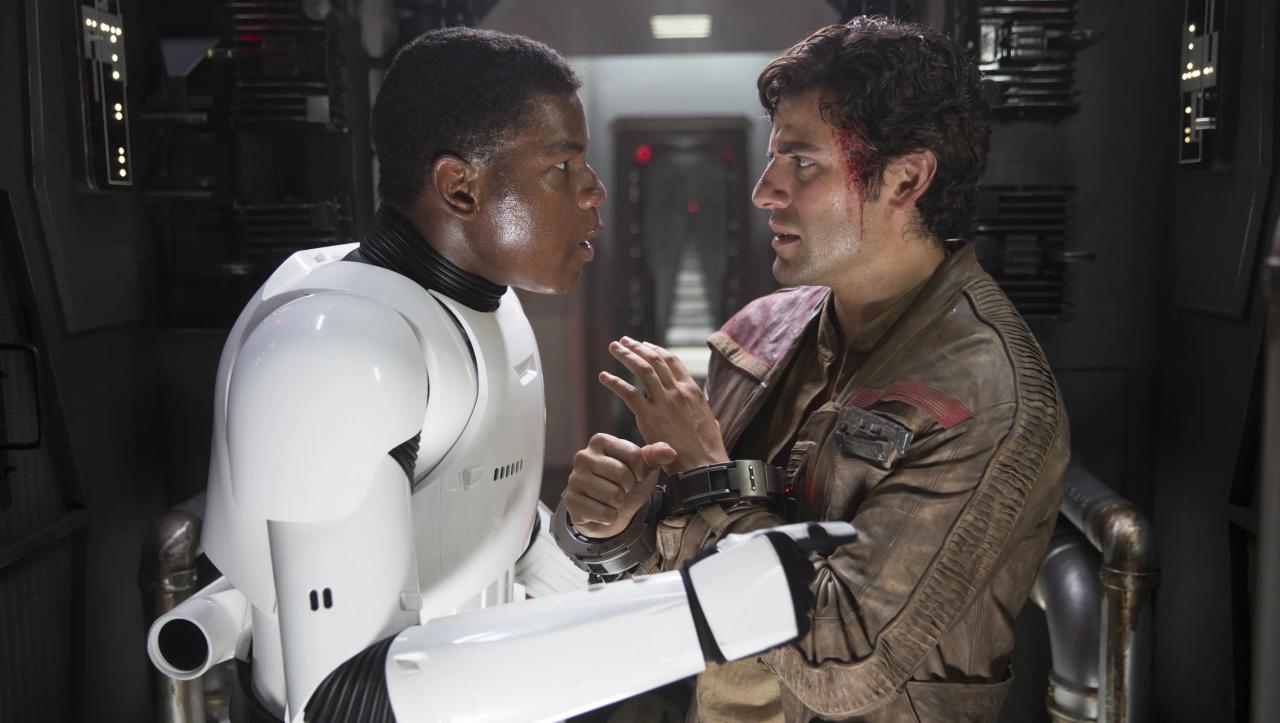
As far as the public has been concerned, though, Star Wars begins and ends on the screen. When The Force Awakens was released in theaters in 2015, the chemistry between Resistance hero Poe Dameron and the AWOL stormtrooper 'Finn' was undeniable. Whether this particular relationship was going anywhere, or if there was any place for queer romance in this new Star Wars film franchise at all, was a speculative matter. Without making any specific promises, director, producer, and writer JJ Abrams assured fans that queer representation was possible. Abrams stated that “it seems insanely narrow-minded and counterintuitive to say that there wouldn’t be a homosexual character in that world.” In hindsight, a rather noncommittal response. But as the quote was widely reported at the time with headlines like “Gay Characters Coming to Star Wars,” it was one which many at the time interpreted as a sign that there was the possibility of a queer love story to come in Abrams’ story.
That patience was rewarded with… not very much. In the lead-up to Solo: A Star Wars Story in 2018, screenwriter Jonathan Kasdan stated that he viewed the film’s deuteragonist Lando Calrissian as pansexual – but no explicit reference to this was made in the film itself. Finally, in 2019, after little but subtext-laden looks and embraces had been shared between Finn and Poe for the duration of the Sequel trilogy, each of these protagonists were paired off with safely female romantic interests before the film’s end. But fans hoping to see a queer romance in Star Wars did get their moment: a two-second kiss at the very end of the film between Larma D’Acy and Wrobie Tyce.
Who? Well, exactly. Larma and Wrobie were a couple of blink-and-you’ll-miss-them background characters whose kiss occurs with little actual development or even earned investment in the characters themselves. All in a scene which, conveniently, can be- and has been- removed from international distribution of The Rise of Skywalker in non-American markets.
Today: A Queer (Expanded) Universe
The streamlining of continuity under the Disney flag came with a new promise: from this point on, every story would count. The novels, the comics, the games, and everything else would be just as relevant to the films as vice versa, each story forming part of a cohesive, non-contradictory, tightly-controlled whole. While there would still be exceptions in room for stories like the Disney+ Star Wars Visions series or the multimedia LEGO franchise to play with and reinterpret Star Wars concepts, for the most part every Star Wars story would comprise the same whole.
With the future of Star Wars controlled by such a family-oriented company as Disney, however, fears increased that the day for true queer representation in the franchise would never come. One of the Disney era’s launch projects, the animated Star Wars: Rebels series, practically confirmed that fear, as it was beset by the same issues in queer clearance as the preceeding Clone Wars series. The Lasat rebel Garrazeb 'Zeb' Orrelios and his human rival the Imperial Agent Kallus were clearly written together in an 'enemies-to-lovers'-style romantic arc, but this was never explicitly stated in the show itself – and only partially committed to by the show’s own staff after the series’ end. Restrictions would get a bit looser with their next animated venture, as two characters in the Star Wars: Resistance series, shopkeepers Orka and Flix, were clearly in a relationship with each other – although, once more, this would not be explicitly stated within the story itself.
Worthy of note as well is Star Wars’ most recent animated series, The Bad Batch, which features a young clone of Jango Fett from Kamino named Omega who identifies as female. While never outright stated to be a trans character, it’s a pretty simple matter to make that inference.
The Star Wars tie-in novels, on the other hand, were open territory for new queer characters. Moff Delian Mors was the first, in the novel Lords of the Sith. She was followed by Imperial interrogator Sinjir Rath Velus, his New Republic slicer boyfriend Conder Kyl, the genderqueer space pirate Eleodie Maracavanya, and X-Wing pilot “Snap” Wexley’s aunts Esmelle and Shirene in the Star Wars: Aftermath novels, farmer Kaeden Larte in Ahsoka, X-Wing pilot Ledaney in Bloodline, Rae Sloane, Imperial Admiral in, well, many stories, and many others to follow – not the least of which has been the High Republic multimedia franchise, which has staffed an entirely unexplored era of Star Wars history with dozens of original queer characters.
The relaunch of Star Wars under Disney ownership also brought with it an ambitious partnership with the Disney-owned Marvel Comics, shipping a brand new line of Star Wars titles to expand their universe anew. One of the brightest new stars of this line was Doctor Aphra, the chaotic droid tinkerer and archaeologist who all-too-often often found herself under the thumb of Darth Vader. She was also very, very gay. The issue Star Wars #19 first reveals that Aphra had previously been in a relationship with Sana Starros, smuggler and former lover of Han Solo. In January 2018, issue #16 of Aphra’s own comic book series, the slightly unhinged doctor would share a kiss with her frequent Imperial pursuer, Magna Tolvan – the first queer kiss depicted in Star Wars canon. Since that kiss, Aphra has only gone forward to leave a trail of broken-hearted women in her wake.

As the new trilogy marched forward, tie-in media would rush to make good on Abrams’ half-hearted promise. The novel Leia, Princess of Alderaan introduced us to a young Amilyn Holdo, hero of The Last Jedi, whose romantic interest wasn’t limited to “human males,” as author Claudia Gray phrases it in the book. In E.K. Johnston’s Queen’s Shadow trilogy, complex queer dynamics are explored between Padme Amidala and her handmaidens, each of whom harbors a deep affection for their queen and each other. The video game Star Wars Squadrons introduces multiple queer characters, including the gay Imperial commander Varko Grey, and the nonbinary Mirialan Rebel pilot Keo Venzee. Ronin: A Visions Novel, an expanded retelling of 'The Duel' chapter of the animated Star Wars: Visions series, establishes that both duelists in that affair were queer themselves.
Two short story collections in the From a Certain Point of View series introduced queer romance with great frequency into the background narratives of A New Hope and The Empire Strikes Back. One entry in particular, 'Of MSE-6 and Men' by Glen Weldon, rewards diligent readers with the tale of a simple mouse droid aboard the Death Star which inadvertently witnesses an affair between Stormtrooper TK-421 and Grand Moff Tarkin – retroactively making the villain into the first queer Star Wars character.
The future of Star Wars is looking queerer than ever, as long as you set your sights beyond the horizons of the films and television programs. Which, to be fair, is where most people are looking. There’s clearly still a lot of improvement to be made, and important work to be done. But we remember still that the queer Star Wars fandom began in large part with a disarming smile from the cape-clad Lando Calrissian, and at least some people creating Star Wars stories haven’t forgotten that either. In 2021, Lando was featured on a Marvel Pride Month cover, in a line with many other confirmed-LGBTQ+ characters. Justin Simien, the writer and producer of the upcoming Lando television series, came out as a gay man himself in 2014. And the truth has always been that to really get authentic queer narratives, you don’t ask permission to get them from straight people: you give queer voices the power to tell them. Nothing is confirmed right now, but we can follow the hyperspace trails and see the way this ship is headed. Looking back over the past 45 years, queer representation in mainstream Star Wars has been pretty dire. But the one thing Star Wars always teaches us is to keep hope alive.
Shmi Skywalker said it best, after all, in The Phantom Menace: “You can’t stop change any more than you can stop the suns from setting.”
Follow Popverse for upcoming event coverage and news
Find out how we conduct our review by reading our review policy
Let Popverse be your tour guide through the wilderness of pop culture
Sign in and let us help you find your new favorite thing.


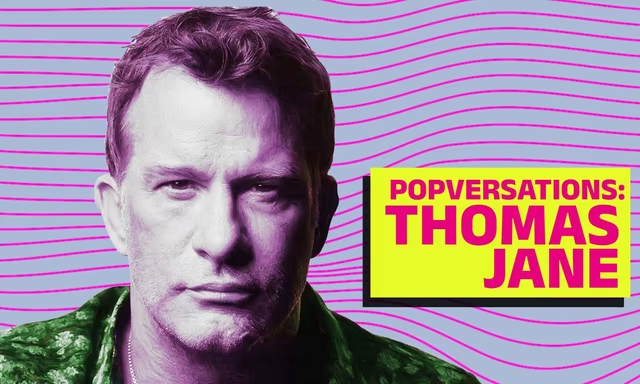


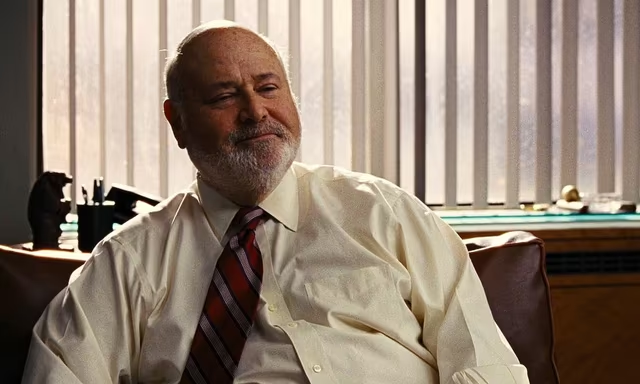
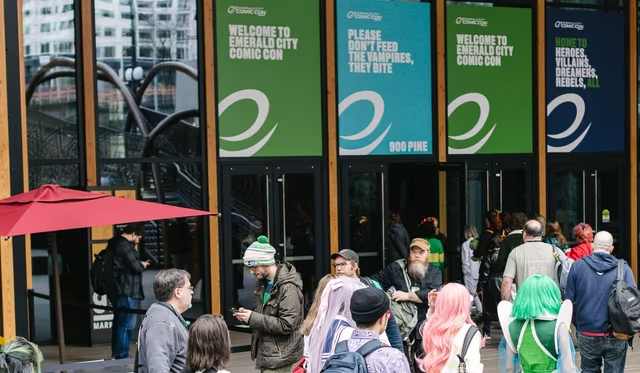

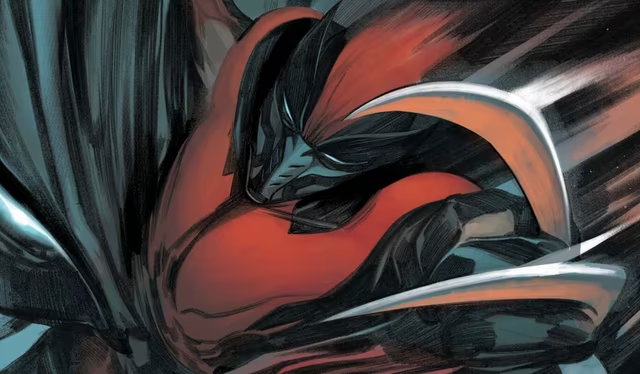
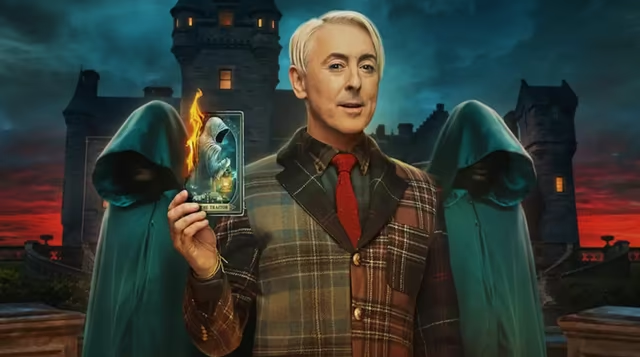






Comments
Want to join the discussion? Please activate your account first.
Visit Reedpop ID if you need to resend the confirmation email.